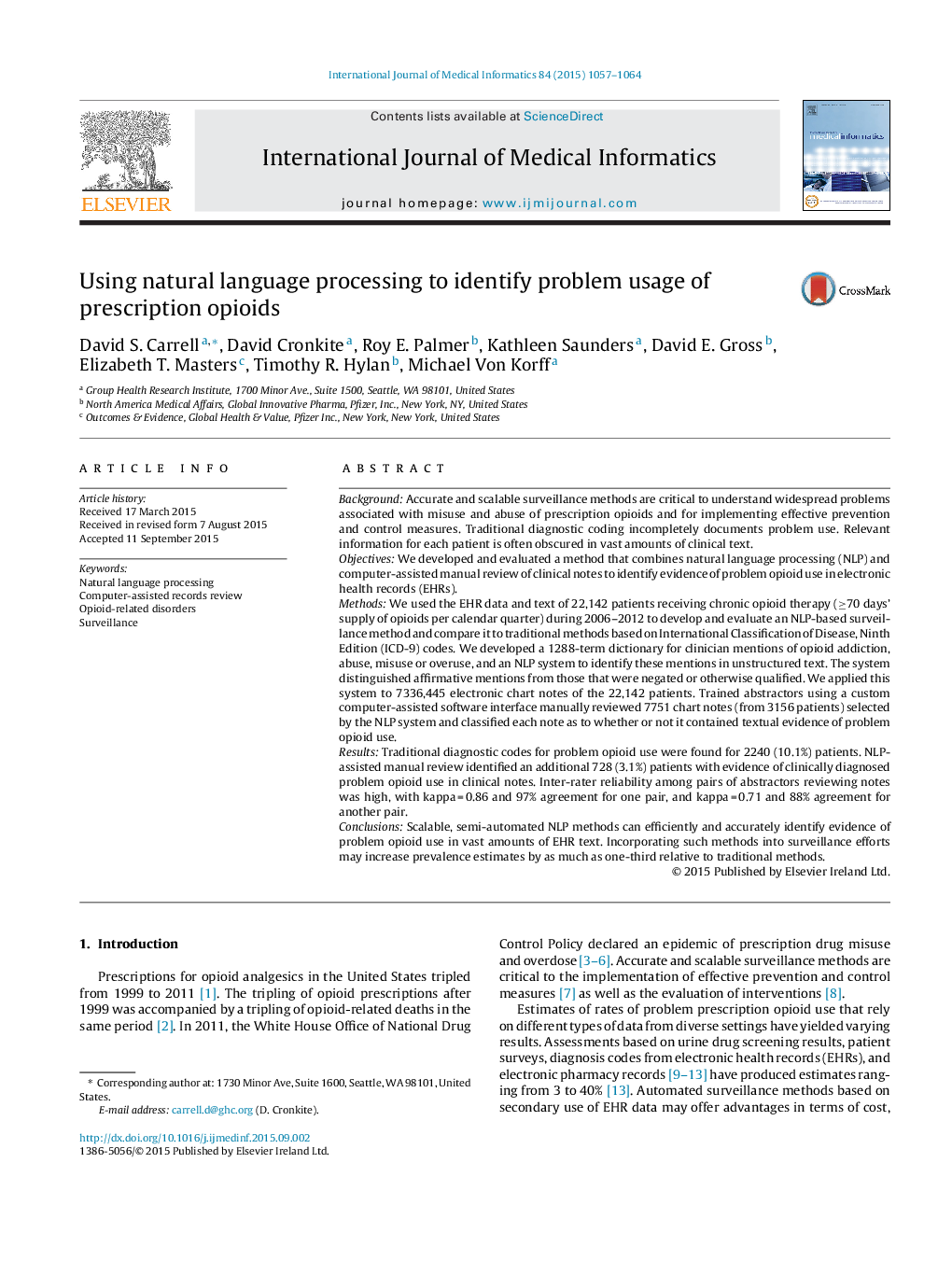| کد مقاله | کد نشریه | سال انتشار | مقاله انگلیسی | نسخه تمام متن |
|---|---|---|---|---|
| 516794 | 1449104 | 2015 | 8 صفحه PDF | دانلود رایگان |
• Natural language processing and computer assisted manual review can be combined to efficiently and accurately identify conditions such as problem opioid use that are often only documented in unstructured clinical text.
• As much as one-third of problem opioid use documented in electronic health records may only be documented in unstructured clinical notes.
• Clinicians use hundreds of different ways to describe abuse, addiction, misuse or overuse of prescription opioids.
• Discovery of novel and unanticipated ways clinicians describe common health conditions in electronic clinical notes from millions of encounters is possible using full-text indexing and query functions built in to popular relational database systems.
BackgroundAccurate and scalable surveillance methods are critical to understand widespread problems associated with misuse and abuse of prescription opioids and for implementing effective prevention and control measures. Traditional diagnostic coding incompletely documents problem use. Relevant information for each patient is often obscured in vast amounts of clinical text.ObjectivesWe developed and evaluated a method that combines natural language processing (NLP) and computer-assisted manual review of clinical notes to identify evidence of problem opioid use in electronic health records (EHRs).MethodsWe used the EHR data and text of 22,142 patients receiving chronic opioid therapy (≥70 days’ supply of opioids per calendar quarter) during 2006–2012 to develop and evaluate an NLP-based surveillance method and compare it to traditional methods based on International Classification of Disease, Ninth Edition (ICD-9) codes. We developed a 1288-term dictionary for clinician mentions of opioid addiction, abuse, misuse or overuse, and an NLP system to identify these mentions in unstructured text. The system distinguished affirmative mentions from those that were negated or otherwise qualified. We applied this system to 7336,445 electronic chart notes of the 22,142 patients. Trained abstractors using a custom computer-assisted software interface manually reviewed 7751 chart notes (from 3156 patients) selected by the NLP system and classified each note as to whether or not it contained textual evidence of problem opioid use.ResultsTraditional diagnostic codes for problem opioid use were found for 2240 (10.1%) patients. NLP-assisted manual review identified an additional 728 (3.1%) patients with evidence of clinically diagnosed problem opioid use in clinical notes. Inter-rater reliability among pairs of abstractors reviewing notes was high, with kappa = 0.86 and 97% agreement for one pair, and kappa = 0.71 and 88% agreement for another pair.ConclusionsScalable, semi-automated NLP methods can efficiently and accurately identify evidence of problem opioid use in vast amounts of EHR text. Incorporating such methods into surveillance efforts may increase prevalence estimates by as much as one-third relative to traditional methods.
Journal: International Journal of Medical Informatics - Volume 84, Issue 12, December 2015, Pages 1057–1064
